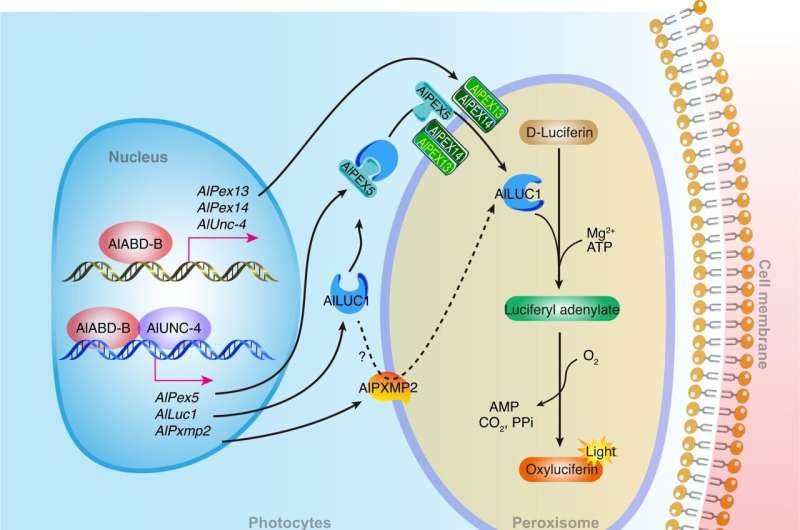March 8, 2024 report
This article has been reviewed according to Science X's editorial process and policies. Editors have highlighted the following attributes while ensuring the content's credibility:
fact-checked
peer-reviewed publication
trusted source
proofread
Transcription factors that regulate development of light organs and bioluminescence in firefly identified

Two bio-researchers, one with Huazhong Agricultural University, the other the Firefly Conservation Research Center, both in China, have identified the key transcription factors that regulate the development of light organs and bioluminescence in the firefly.
In their study, reported in the journal Nature Communications, Xinhua Fu and Xinlei Zhu engineered firefly genes to learn more about how they regulate the functions of their light organs.
Fireflies are a family of soft-bodied beetle known for their luminescent organs. Prior research has shown that before they reach their adult stage, when they are able to glow and fly, fireflies go through a larval stage, when they live in water as glowworms. There are more than 2,000 species of firefly, some of which are not bioluminescent.
In this new effort, the researchers focused their efforts on Aquatica leii, a species that lives in rice paddies in China. They wanted to know how firefly larvae are able to change their light organs to a different structure as they mature into adulthood—from protective organs as larvae to glowing lanterns as adults. They also wanted to know how the beetles control their lanterns—prior research has shown they are able to turn them on and off at will.
As adults, the lanterns are used as part of a mating ritual; both males and females glow. Research has shown that the lantern is turned on due to a chemical reaction (as the molecule luciferin reacts with oxygen) somehow instigated by the firefly. To find their answers, the researchers conducted a genomic analysis of the firefly.
They focused their attention on eight particular homeobox genes (those that regulate anatomical features during embryonic development), suspecting they might explain how the beetle is able to change its lantern organ so dramatically.
They found transcription factor AlABD-B played a major role in light organ development—it also interacted with another transcription factor called AlUNC-4. They also found that the two transcription factors working together were capable of activating the AlLuc1 gene, which is also involved in producing glowing luciferase. They also identified three other genes involved in the process: AlAp2, AlRepo and ALAntp.
The researchers plan to continue their work, hoping to find the means by which the beetle is able to convert a major organ so quickly and dramatically as it moves from larvae to mature firefly.
More information: Xinhua Fu et al, Key homeobox transcription factors regulate the development of the firefly's adult light organ and bioluminescence, Nature Communications (2024). DOI: 10.1038/s41467-024-45559-7
Journal information: Nature Communications
© 2024 Science X Network


















